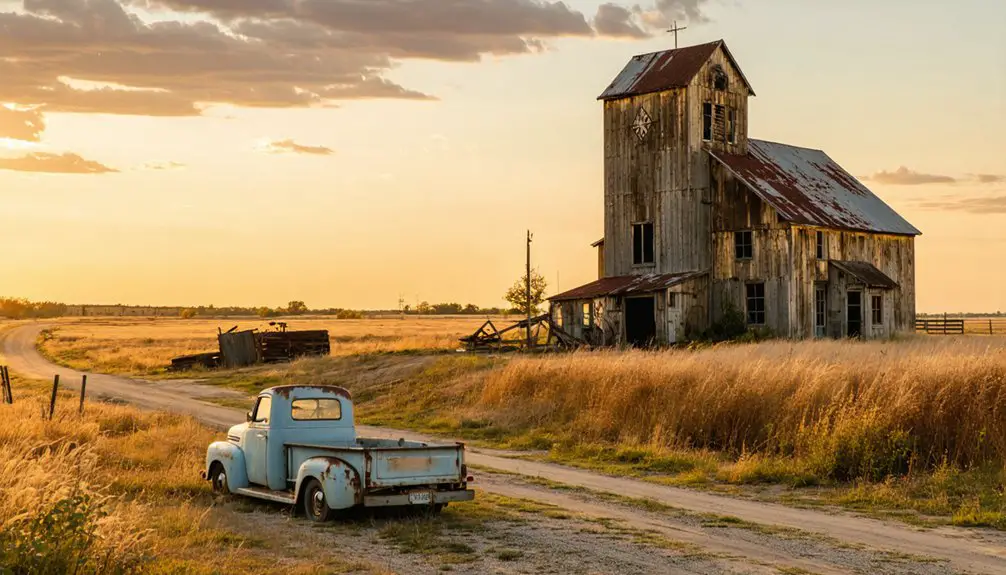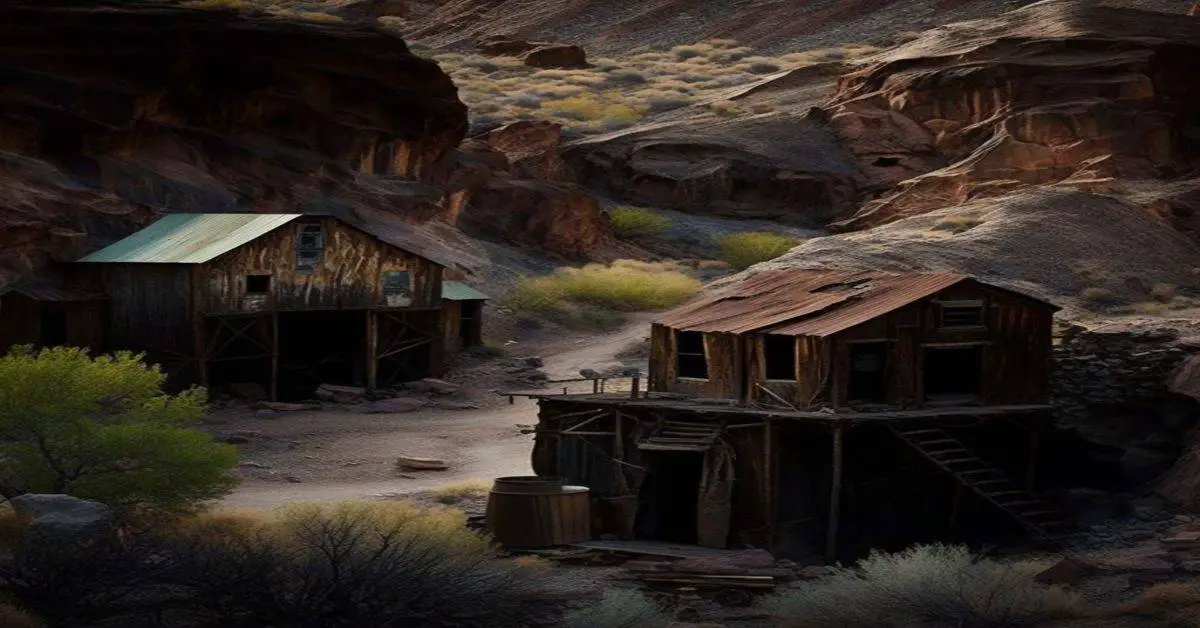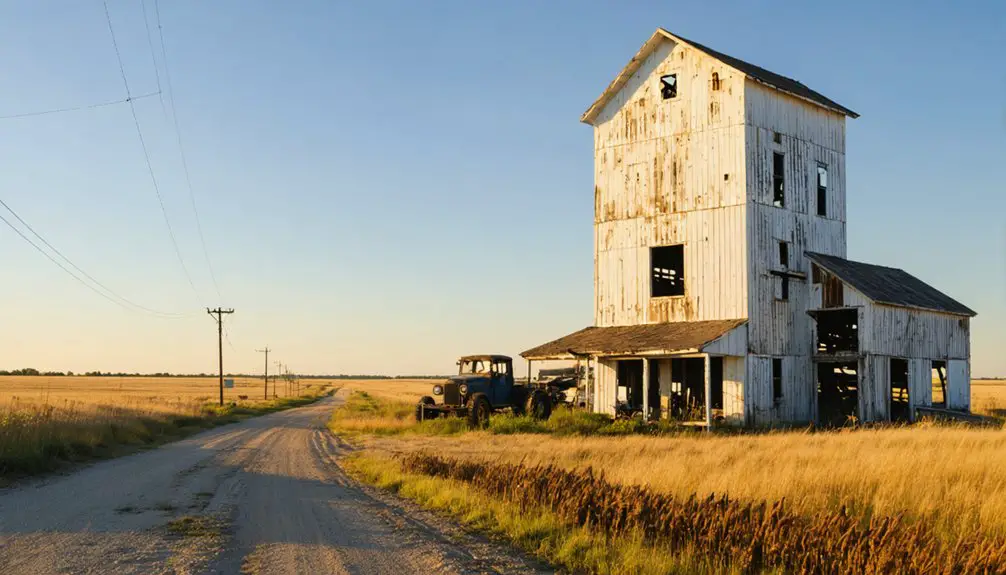You’ll find Hartland, North Dakota’s remains twelve miles from its nearest neighbors, where Colonel Samuel Mapes first settled in 1831. The town reached its peak in the 1920s with 150 residents, thriving businesses like Hovland’s store, and an essential grain elevator. After the 1929 stock market crash triggered local bank closures and economic decline, Hartland gradually emptied out. Today, only one inhabited home and a few deteriorating structures mark this once-bustling farming community’s rich past.
Key Takeaways
- Hartland was established in 1831 by Colonel Samuel Mapes and reached its peak population of 150 residents during the 1920s.
- The town featured essential businesses including Hovland’s store, a local bank, Wheeler’s general store, and a grain elevator.
- Economic decline began after the 1929 stock market crash, leading to bank closures and financial hardship for the farming community.
- Currently, only one inhabited home remains at the former townsite, with most original structures deteriorated and property fenced off.
- The surrounding agricultural landscape has reclaimed the area, with nearby towns absorbing the former population of Hartland.
Origins and Early Settlement
When Colonel Samuel Mapes first settled in the Hartland area in 1831, he established what would become one of North Dakota’s early pioneer communities.
Following Mapes’ arrival, Rufus Tenney became the first settler within Hartland’s town limits, paving the way for other pioneers to join this budding settlement.
The community, which is located twelve miles away from surrounding towns, eventually faced the same challenges as other settlements in maintaining its population over time.
Like many ghost towns documented through Ghosts of North Dakota, Hartland’s history represents an important piece of the state’s cultural heritage.
The Boom Years: 1920s Peak
At its peak in the 1920s, Hartland’s population reached around 150 residents who formed a vibrant farming community centered around essential businesses like Hovland’s store, the local bank, and a grain elevator.
Like many towns that eventually became completely barren sites, Hartland’s story reflects the broader pattern of ghost towns across North Dakota.
You’d have found a bustling main street where farmers and townspeople conducted their daily business, from banking transactions to grain trading and general merchandise shopping. Percy and Jerry Stockdill operated the town’s grocery store and post office, serving as a central hub for the community.
The town’s social fabric was woven through family homes, schools, and stores, creating a close-knit rural community that would persist until the devastating effects of the 1929 stock market crash began to take hold.
Population and Business Growth
The 1920s marked Hartland’s golden age of growth, as the town reached its peak population amid North Dakota’s broader 12.1% demographic expansion.
You’d have found a bustling community shaped by demographic shifts, with Scandinavian and German immigrants establishing roots alongside earlier settlers. The region’s Native American tribes had long maintained settlements in the area before European colonization arrived.
Economic factors drove the town’s prosperity, as you’d see agriculture-based businesses flourishing everywhere.
The railroad’s presence meant local farmers could easily ship their grain, while merchants, bankers, and craftsmen served both town and countryside.
Like many small business owners in the Midwest during this era, immigrants played a vital role in establishing and operating local shops.
You’d spot grain elevators rising above the prairie, general stores stocking essential supplies, and blacksmith shops supporting the growing mechanization of farming.
Local banks provided crucial credit, while schools and churches expanded to meet the needs of growing families.
Bustling Main Street Life
Main Street’s vibrant pulse echoed through Hartland during the 1920s boom, creating a bustling commercial corridor that served as the town’s economic backbone.
You’d find Wheeler’s general store and Sterns’ Department Store anchoring the retail landscape, while blacksmiths and machinery shops hummed with activity nearby. Similar to the historically preserved fourteen-sided barn of Draper, the shops represented innovative engineering of their time. The Park House hotel, operated since 1827, provided lodging for travelers and businesspeople visiting the thriving town. The street’s architectural features blended commerce and community, with the Baptist Church standing as a cultural landmark amid the mix of stores and homes.
Transportation links, including the Main Street and Raceway bridges, connected you to essential services and social gatherings. Local events flourished as community members moved between drug stores, grain shops, and manufacturing facilities.
The street’s economic resilience showed in its diverse businesses, from Morrill’s Axe Manufacturing to family-run flower shops, all contributing to Hartland’s peak prosperity.
Community Social Activities
During Hartland’s bustling 1920s peak, social life centered around a rich tapestry of community gatherings that brought residents together year-round.
You’d find townspeople congregating at the general store and post office, sharing news and strengthening social cohesion through daily interactions. The local school buzzed with activity, hosting sports games, plays, and PTA meetings that drew crowds from across town.
Church activities formed the backbone of social life, with Sunday services, holiday celebrations, and community picnics uniting families throughout the seasons. Like many North Dakota towns, most residents were German immigrants who brought their cultural traditions to these gatherings. With a thriving population of 150 residents, the town experienced its most vibrant period of social activity.
In winter, you’d join neighbors for indoor card games and storytelling, while summer meant lively barn dances featuring local musicians.
The farmers’ cooperative meetings doubled as social forums, where you’d discuss crops while maintaining essential community bonds.
Key Businesses and Community Life
As Hartland reached its peak of economic activity, several essential businesses served the local population and surrounding farming community.
You’d find a bustling grocery store supplying daily necessities, while the local bank handled financial matters for residents until its closure following the 1929 crash. The blacksmith shop kept farm equipment running and provided vital metalwork services.
Community gatherings often centered around the hotel and pool hall, where you could socialize with neighbors and travelers alike.
Local commerce thrived through family-run establishments, with professional services from a doctor and banker rounding out the town’s self-sufficient nature.
The store, operating from 1925 to 1946, exemplified the tight-knit business community that supported both town residents and area farmers.
Notable Families and Residents
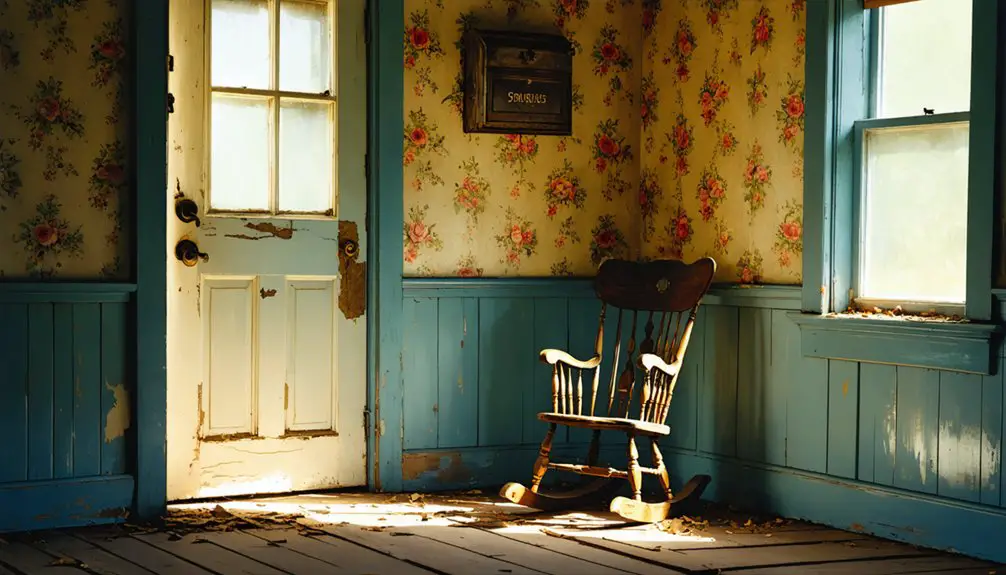
You’ll find Hartland’s early history shaped by prominent families like the Hovlands, who ran the town store from 1925 to 1946, and the Stockdills, who owned a notable building later moved to Berthold.
The town’s doctor and banker established key residences that remained identifiable long after the community’s decline, highlighting their significant roles in local life.
The Schafer family’s regional influence and Selmer and Caroline Hovland’s 1935 property purchase demonstrate how interconnected family ties sustained this small prairie community.
Prominent Local Business Owners
Several prominent families and business owners shaped Hartland’s economic landscape during its peak years, when the town supported roughly 150 residents.
The Hovland family demonstrated notable business leadership through their operation of the local store from 1925 to 1946, providing essential community support through retail services.
Local bankers, whose residence stood among the town’s original homes, wielded significant financial influence until the 1929 stock market crash forced the bank’s closure.
You’ll find the Stockdill family’s impact through their property ownership of former commercial spaces, while medical professionals and skilled tradesmen, like the local blacksmith, rounded out Hartland’s business community.
The town doctor’s residence, still standing today, represents the essential professional services that helped sustain this rural community.
Longtime Community Members Remembered
The Hovland and Norgard families stand at the heart of Hartland’s remembered history, with their legacies spanning multiple generations in this North Dakota community.
Selmer and Caroline Hovland established their roots in 1935, purchasing their home for $800, while Selmer ran the town’s store from 1925 to 1946. Their son Curt was born the same year they settled in Hartland.
Community memories are preserved through Pearl, who was related to Selmer Norgard, highlighting the deep family connections that wove through the town’s social fabric.
While most original structures have succumbed to time, the stories of these families keep Hartland’s spirit alive.
Through their shared experiences and oral histories, you’ll find a reflection of the close-knit relationships that defined this once-thriving community of 150 residents.
Medical and Banking Leaders
During Hartland’s peak years, two influential figures – the town doctor and banker – played pivotal roles in sustaining the community’s well-being and economic stability.
The town doctor served not just Hartland but surrounding rural areas, providing essential care during harsh Dakota winters. Local medical practitioners were especially significant given the region’s isolation and prevalence of diseases like tuberculosis.
The banker’s influence extended throughout the community, supporting local businesses and development until the 1929 crash forced the bank’s closure.
Both leaders resided in notable houses that became landmarks in Hartland’s landscape. Their presence intertwined with other prominent residents like the Hovlands, who ran the town store, creating a network of community pillars that kept Hartland functioning until economic shifts led to its eventual decline.
Economic Downturn and Bank Closure

Like many rural North Dakota communities in the 1920s, Hartland faced devastating financial turmoil when its local bank shuttered following the 1929 stock market crash.
The closure wasn’t an isolated incident – it reflected a broader banking crisis that had already claimed nearly one-third of North Dakota’s commercial banks between 1921 and 1924.
You’ll find the economic instability was particularly severe in agricultural communities like Hartland.
When crop prices plummeted, farmers couldn’t repay their loans, creating a domino effect.
The Bank of North Dakota’s decision to recall funds from local banks only accelerated the crisis, with $1.5 million tied up in failed institutions by 1924.
Without access to credit, Hartland’s businesses and farms struggled to operate, leading to a swift decline in property values and population that pushed the town toward abandonment.
Daily Life in Rural Hartland
Daily routines in rural Hartland centered on three essential community pillars: farming, education, and church life.
You’d find farmers adapting their practices to the challenging subhumid grasslands, making farming adjustments by consolidating land beyond the initial 160-acre plots to create sustainable operations.
Your children would’ve walked to the two-room schoolhouse, where rural education extended through tenth grade, combining academic learning with social activities.
Rural students shared more than lessons in their two-room schoolhouse – they built community through both learning and play.
The local church served as your primary gathering place, hosting community events and providing much-needed social connections in an area with limited entertainment options.
You’d shop at small grocery stores for basic needs, often traveling to larger towns for additional supplies.
Daily life revolved around seasonal farming cycles, high school sports, and church functions, creating a tight-knit but isolated community experience.
The Path to Abandonment
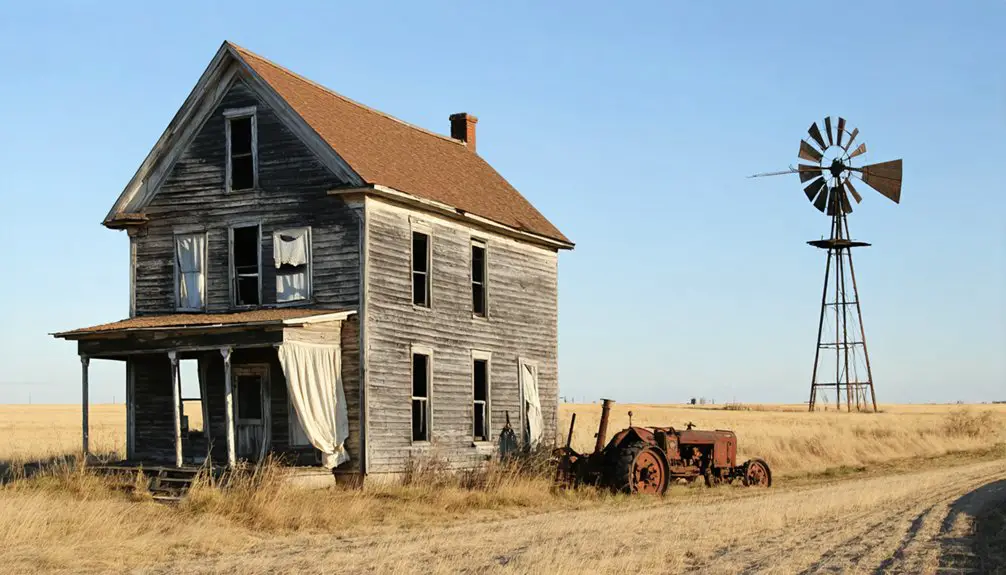
As the devastating 1929 stock market crash rippled through America’s heartland, Hartland’s downward spiral began with the closure of its local bank.
You’d soon witness the domino effect as the town’s businesses – from the blacksmith to the hotel – shuttered their doors amid mounting economic challenges.
Without a major railroad connection, Hartland struggled against transportation limitations that favored nearby towns like Watford City.
The harsh North Dakota winters and agricultural hardships of the Great Depression only accelerated the town’s decline.
You could see families packing up as the population dwindled from its peak of 150 residents.
The mechanization of farming and consolidation of agricultural operations dealt the final blows, leaving essential services like the post office with no choice but to close.
Present-Day Ghost Town Status
While time has ravaged most of Hartland’s original structures, you’ll find a handful of deteriorating buildings still standing at the former townsite.
Today’s present day condition reveals rotting homes and business buildings slowly succumbing to the harsh North Dakota elements. You won’t have easy access to explore these remnants, though – most of the property is fenced off with “no trespassing” signs.
The town’s ghost town status is firmly established, with just one inhabited home remaining where a community of 150 once thrived.
You won’t find any functioning businesses, public facilities, or maintained infrastructure. The surrounding agricultural landscape has largely reclaimed this piece of history, while nearby towns like Carpio and Berthold have absorbed any remaining local population.
Legacy and Historical Impact
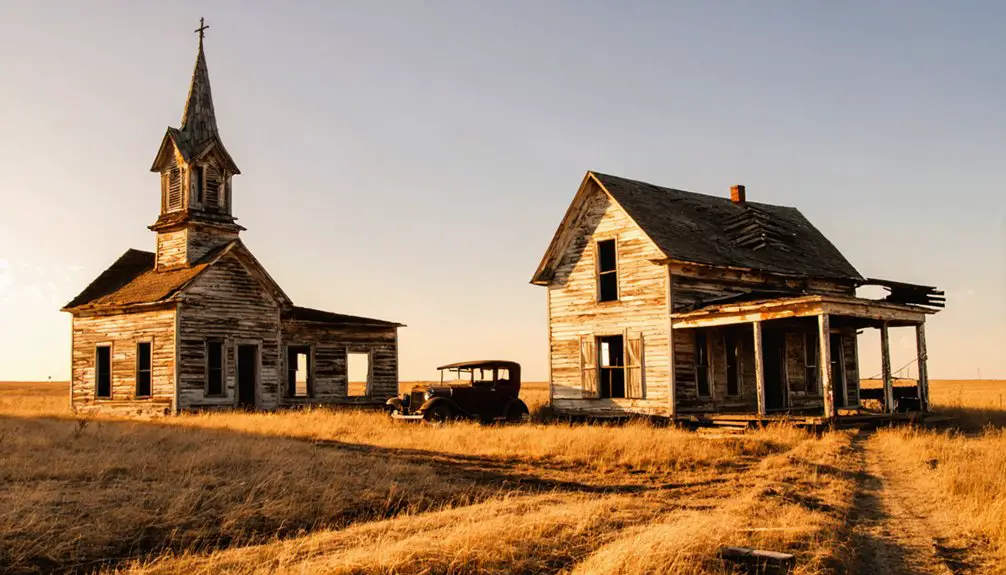
The bustling community of Hartland played a significant role in North Dakota’s early 20th-century development, supporting 150 residents with a diverse economic foundation.
You’ll find its cultural significance reflected in the stories passed down through generations, particularly about the local doctor, banker, and thriving businesses that once served the region.
The town’s historical preservation efforts live on through oral histories and personal accounts of former residents.
Memories of Hartland’s vibrant past survive through the cherished stories shared by those who once called it home.
You can trace Hartland’s impact through its contributions to Ward County’s rural fabric, where it served as an essential hub for trade and social interaction.
Though the buildings have largely disappeared, with some relocated to places like Berthold, Hartland’s legacy endures as a reflection of the rise and decline of rural Midwestern communities during the transformative early 1900s.
Frequently Asked Questions
Are There Any Reported Ghost Sightings or Paranormal Activity in Hartland?
You’ll find spectral legends about black dogs near the cemetery and ghostly encounters in abandoned buildings, though they’re mostly unverified local stories without formal paranormal documentation or scientific investigation.
What Happened to the School Records and Historical Documents?
Time waits for no one. You’ll find most school archives were lost when families moved away, buildings deteriorated, and no centralized historical preservation existed. Records scattered among private collections or disappeared entirely.
Can Visitors Legally Explore the Remaining Structures Today?
You can’t legally explore the remaining structures without property owner permission. Current exploration laws and visitor guidelines prohibit entry, as the buildings are fenced, posted with no-trespassing signs, and privately owned.
What Was the Town’s Relationship With Native American Communities?
While early cultural exchange likely occurred, you’ll find the town’s true legacy was built on land treaties that displaced Native Americans, reflecting the broader pattern of settlement across North Dakota’s frontier.
Did Any Movies or Television Shows Ever Feature Hartland?
You won’t find any movies or TV shows featuring this location, as research shows no documented film locations or media portrayals. It’s mainly appeared in YouTube videos about ghost towns.
References
- https://www.youtube.com/watch?v=eBfraH7yoGw
- https://northernsentry.com/2025/06/26/north-dakota-ghost-towns/
- https://www.onlyinyourstate.com/experiences/north-dakota/ghost-towns-nd
- https://ghostsofnorthdakota892857007.wordpress.com/2013/07/15/hartland-nd/
- https://ghostsofnorthdakota892857007.wordpress.com
- https://ghostsofnorthdakota892857007.wordpress.com/2017/03/28/the-story-of-how-ghosts-of-north-dakota-began/
- https://www.waterwinterwonderland.com/namedplacedetail.aspx?id=3079&type=12
- https://www.youtube.com/watch?v=hRFfy3HQaus
- https://www.ghosttowns.com/states/nd/hartland.html
- https://www.youtube.com/watch?v=0n3LvrSDRLU
